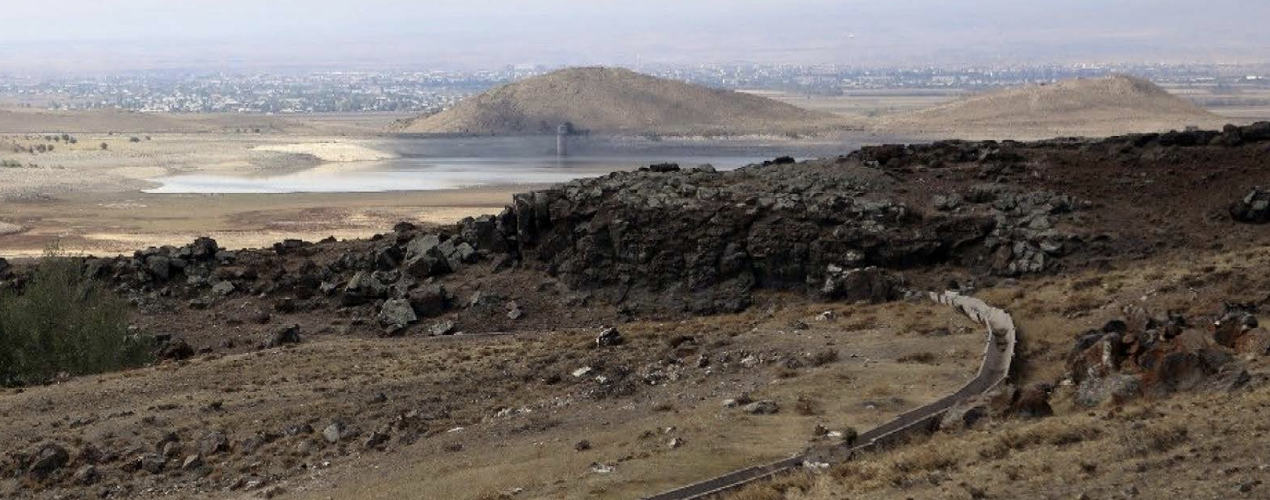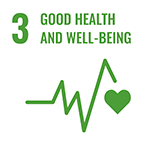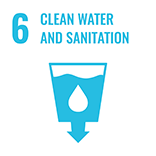Restoring lost water resources in the Shirak region of Armenia

Summary
This solution was supported by the EU-financed Climate Forum East project, and aimed to tackle drinking water issues facing the Basen community in mountainous Armenia. With both ongoing maintenance issues and the increasing risks of climate-induced floods and mudflows damaging existing infrastructures, it was decided a more sustainable solution was needed to ensure drinking water reliability and quality.
The Karnut water reservoir, located in the Shirak region of Armenia, was created in the early 1970s to provide water for irrigation of the surrounding cultivated lands. The dam wall, which measures 34 metres high and 710 metres long, creates a reservoir with a total capacity of 21.8 million cubic metres. Despite its size, the reservoir receives only small amounts of rainwater from its own catchment area and relies on water from the nearby Akhuryan and Jajur rivers that are diverted to the reservoir through a series of canals. These canals were built based on concrete structures set in the ground and strengthened with masonry.
Due to natural wear and tear, regular maintenance work is needed for the canals to function as intended. These canal structures are also threatened by more serious damage due to the increasing risk of floods and mudflows as a result of a warming climate and increased precipitation in the region. In the early 2010s, a 240-metre-long section of a drinking water pipe, serving the community of Basen, was damaged by mudflow, leading to poor water quality and sanitary issues in the community. While the village once had an alternative drinking water option, this was abandoned several years ago due to carcinogenic asbestos-lined piping. Thus, the community of Basen found itself in a vulnerable position with regards to securing safe drinking water.
Overview
- Location:
- Implementation sites:
-
- Single country
- Single location
- Mountain region:
-
Lesser Caucasus
- Province:
-
- Shirak Province
- Site locations:
-
Basen Village
- Solution scale:
- Ecosystem type(s):
- Solution type(s):
- Climate impact(s) addressed:
- Climate impact time-scale(s):
- Other benefit(s) associated with the solution implementation:
-
- Health benefits
- Co-benefit(s) associated with the solution implementation:
- Implementation timeline:
-
- 2015 - 2017
Solution details
Main beneficiaries & outcomes
The entire population of Basen village has benefited from the solution – a total of 1,775 people from 459 households:
- The freshwater capacity of the chlorination station is about 110 litres per second.
- With the new underground pipes, floodwater or mudflow is kept out, and the risk of waterborne disease infection is greatly reduced.
- With the municipality and community in charge of maintenance, they now have the tools to better adapt to the different scenarios of climate change and use water resources more consciously
Planning and implementation
The Basen community has regularly been experiencing issues with drinking water, and the population specifically requested a more sustainable solution which is adapted to future climate-related changes. The EU-financed Climate Forum East project provided support to bury the water pipeline underground to ensure drinking water quality. This was achieved by adding a chlorination station, a solution which was decided following multiple meetings between the Basen community and local authorities.
Involvement of the residents of Basen from the outset was considered vitally important to foster community ownership. Project staff provided training and seminars and facilitated discussions about Armenian commitments and measures in the framework of national adaptation planning, linking international climate agreements to the local scale and addressing the challenges of intensified climate hazards in recent years. This approach helped improve inhabitants’ understanding and support of concrete implementation of adaptation measures.
After completing project implementation, the new infrastructure was handed over to the community, as per written agreement between Climate Forum East as the donor, implementing agencies and local partners. The municipality committed to ensuring further maintenance of the chlorination station, and proper service and renovation of the irrigation infrastructure. The municipality also took responsibility for the establishment of regular monitoring and control measures of the chlorination station’s proper performance. In addition, this created an opportunity to add water meters to measure the actual quantity of drinking water used by residents.
Finance
The project was part of the framework of “Climate Forum East II” program under financial support of the EU, the Austrian Red Cross, and the Austrian Development Cooperation.
Innovation
The partnership between the municipality and community in maintaining the water infrastructure means that different voices and perspectives can be heard in future decision-making; for example, in adapting to different scenarios of climate change and how to use water resources more consciously.
Capacities for design and implementation
Knowledge
Training was provided to the local community to increase their awareness and understanding of adaptation measures in an Armenian context. Having this knowledge and understanding of both national adaptation plans and local measures, can inform decisions as the inhabitants take control of the new water infrastructure.
Technology
Technologies are important in ensuring the chlorination station’s performance is maintained over time. Regular monitoring of the station and the introduction of water meters means that the quality of the water can be assessed against the demand from the local community.
Institutional
The project once completed was handed over to the community, ensuring local ownership of the adaptation solution. This was a written agreement between the donor Climate Forum East, implementing agencies, and local partners. The municipality committed to maintaining and monitoring the chlorination station which increased the likelihood of its long-term sustainability and performance.
Outlook & Scalability
Potential for upscaling and replication
The solution shows benefits in terms of approach and implementation mechanisms. It is a small-scale and affordable adaptation solution that the community can initiate and handle itself through the strengthening of existing capacities. It has proven successful to break down international agreements to the local level and ensure long-term maintenance of newly introduced adapted infrastructure. Upscaling the solution might require external funding which for example can be found through linking the project to national adaptation targets or working alongside private actors.





Comments
There is no content